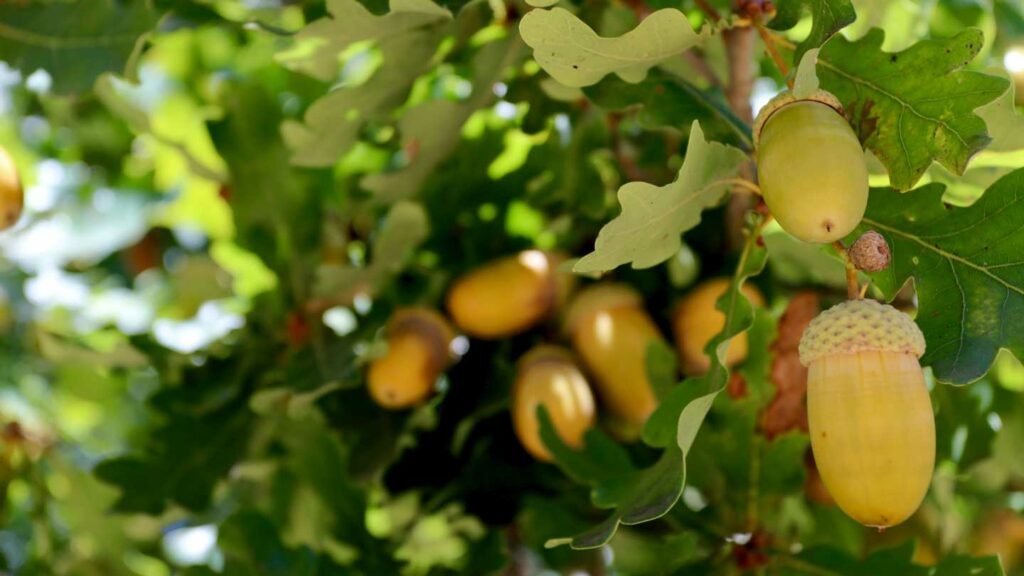Oak trees stand tall, winding around a natural embroidery across landscapes. In the midst of their grandeur, an inquiry waits: do all oak trees yield acorns? Some overwhelm Eastern landscapes, while others, like the scour oak, flourish in parched Western soils.
Every species, etched by its surroundings, contributes extraordinarily to the many-sided mosaic of the botanical world. Digging into the many-sided world of oak varieties, this exploration discloses the secrets of acorn production.
So, continue reading before you look for how to tell when acorn squash is ripe.
The Variety Of Oak Trees
Traversing landmasses, oak trees characterize landscapes with their extraordinary qualities. The transcending white oak, tracked down in Eastern domains, orders consideration with its majestic presence.
Conversely, the clean oak, flourishing in bone-dry Western soils, flaunts a strong strength. Oak varieties, similar to the water oak close to swamps, adjust consistently to explicit conditions.
Past these, the post oak, with its twisted branches, adds provincial appeal to different territories. Every species, etched by surroundings, adds to the multifaceted mosaic of the botanical world.
The Lifecycle Of Acorns
Acorns, humble seeds of oak trees, leave on an entrancing excursion from bloom to seed. Fragile blossoms, borne on the branches, mark the start of this natural odyssey.
As the seasons unfurl, these small undeveloped organisms mature, enduring components with calm strength. At exactly the right moment, the acorns plunge from their arboreal homes, covering the ground in a demonstration of the tree’s life cycle.
This many-sided process, inconspicuous yet fundamental, typifies the substance of oak tree presence. From blossoming vow to seedling potential, the acorn’s process reflects the circle of life in the great orchestra of nature.
Factors Impacting Acorn Production
Nature’s range impacts the oak’s acorn creativity in a hit the dance floor with the components. Climate, a quiet painter, murmurs insider facts to the roots, forming the oak’s capacity to prove to be fruitful.
Soil conditions, one more maestro in this orchestra, lead the tree’s potential with a musical influence. Acorn production, a dance of environmental responsiveness, uncovers the tree’s aversion to its surroundings.
The oak tree adjusts its acorn result to the complexities of climate and soil, displaying a surprising flexibility. The oak’s capacity to yield its nutty diamonds turns into a nuanced articulation of ecological concordance.
Oak Trees And Alternation Of Acorn Production
Nature coordinates a musical hit the dance floor with oak trees, switching back and forth among overflow and shortage. Pole years, plentiful in acorns, reveal an outpouring of nutty diamonds, covering the woodland floor in a plentiful showcase.
These long stretches of bounty, nature’s ensemble going full bore, support untamed life and imprint times of bounty. Lean years, as an unmistakable difference, murmur stories of shortage, uncovering the oak’s capacity for transformation.
Recognizing Acornless Oak Varieties
Not all oak trees stick to the conventional acorn script. Some, like the Pin Oak, really like to exhibit their effortlessness without dropping these nutty jewels.
Fancy oaks, valued for style, frequently focus on foliage over productive seed production. Perceiving these quiet acorn-less entertainers amid the oak group requires a sharp eye for nuance.
Pin oaks, with their pyramidal shape, stand tall without giving up to the acorn overflow. Knowing how to tell if acorn squash is bad and these varieties in acorn production enhances the woven artwork of oak variety.
Oak Trees And Wildlife
Acorns, a meal for the wild, assume a crucial part in the circle of life. Squirrels assemble these nutty fortunes, putting away them for colder days in a showcase of nature’s planning.
Birds, attracted to the overflow, devour the smaller than normal gifts, adding a vacillating orchestra to the timberland soundscape. Bugs, as well, track down food in the wealth of these little seeds, adding to the unpredictable trap of life.
Conclusion
In disentangling the embroidery of oak trees and their acorns, one discovers the complexities of nature’s choreography. From different oak varieties to the musical dance of acorn production, every component paints a novel stroke in the material of our natural world.
Recognizing the jobs played by these majestic trees in supporting ecosystems, this exploration commends the nuanced brilliance of oak trees, helping us to remember the secret marvels inside our landscapes.

